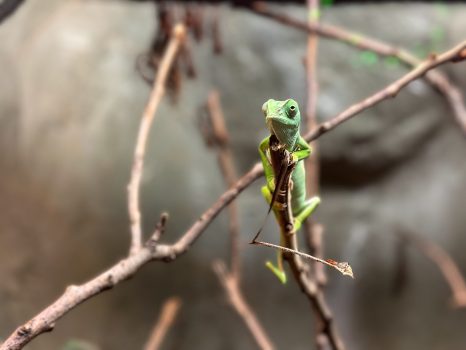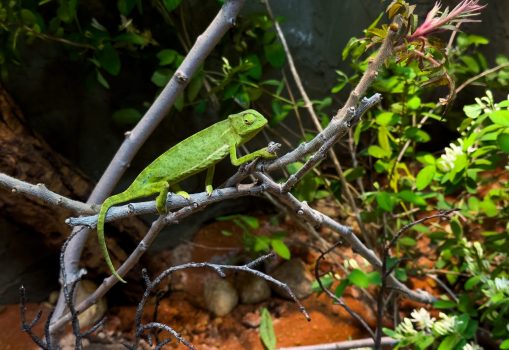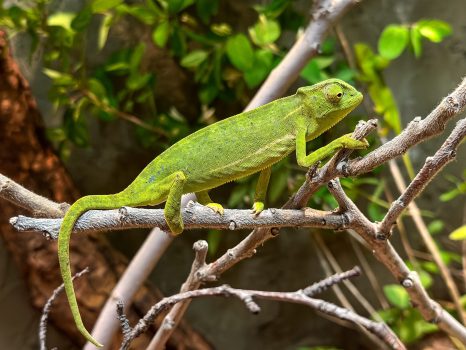Senegal Chameleon
Common Name: Senegal Chameleon
Scientific Name: Chamaeleo senegalensis
Names: N/A
Locations: N/A



Diet
Senegal Chameleons are insectivores, primarily feeding on a variety of insects such as crickets, grasshoppers, flies, and occasionally small lizards. They are known to have a keen eye and will patiently wait for prey to come within striking distance before using their long, sticky tongue to capture it.
Average lifespan
In captivity, Senegal Chameleons can live around 5 to 7 years with proper care.
Size
Senegal Chameleons are relatively small compared to other chameleon species. They typically grow to lengths of about 15 to 25 centimeters (6 to 10 inches) from snout to tail.
Weight
Adult Senegal Chameleons generally weigh between 50 to 150 grams (1.8 to 5.3 ounces).
About
Senegal Chameleons are native to West Africa, particularly found in countries like Senegal, Gambia, Guinea, and Mali. They inhabit a range of habitats including savannas, woodlands, and shrub lands. They are arboreal creatures, spending most of their time in trees and bushes.
Size and behavior
Senegal Chameleons have the typical chameleon characteristics of having independently mobile eyes, a prehensile tail, and the ability to change color. They are solitary animals and are generally territorial, especially males. They are also known for their slow and deliberate movements as they navigate their environment.
Diet and nutrition
Senegal Chameleons have a specialized diet consisting mainly of insects. They use their long, sticky tongue to capture prey with precision. It’s important for keepers to provide a variety of appropriately sized insects to ensure their nutritional needs are met.
Conservation status
The conservation status of Senegal Chameleons in the wild is not well-documented, but they are not considered to be at risk of extinction. However, habitat loss and degradation due to deforestation, urbanization, and agricultural expansion pose potential threats to their populations in some regions.
Fun fact
One fascinating aspect of Senegal Chameleons is their ability to change color. While they are often associated with using color change for camouflage, they also use it to communicate with other chameleons, regulate their body temperature, and express emotions such as stress or excitement.
Call or visit your local Reptilia Facility to learn how you can adopt one of these amazing reptiles.










